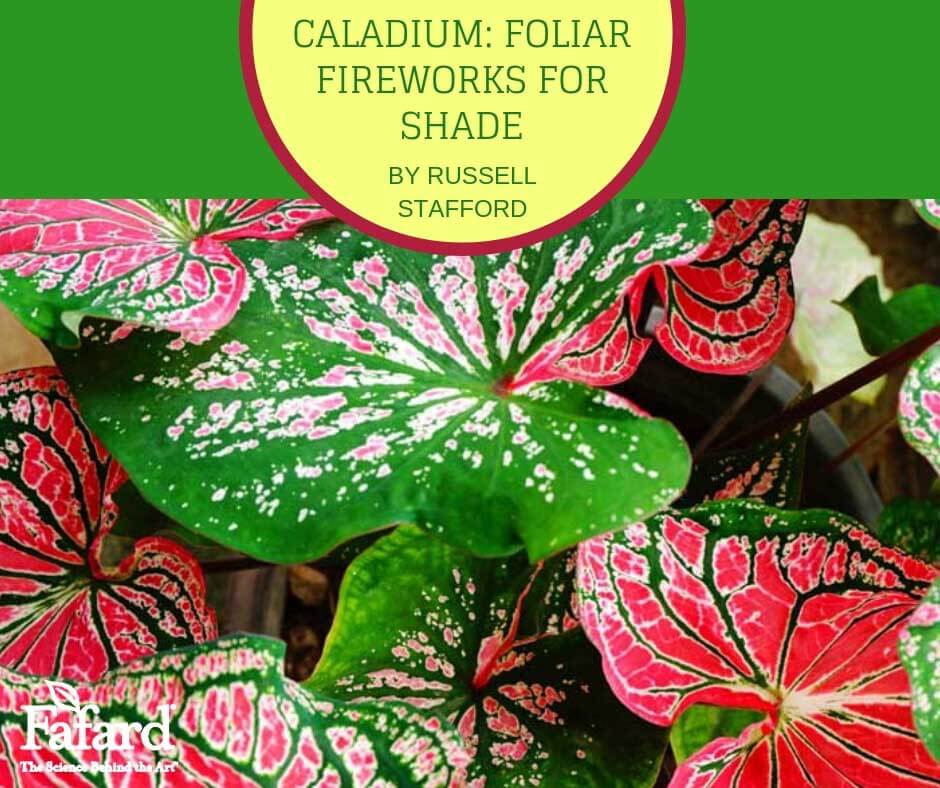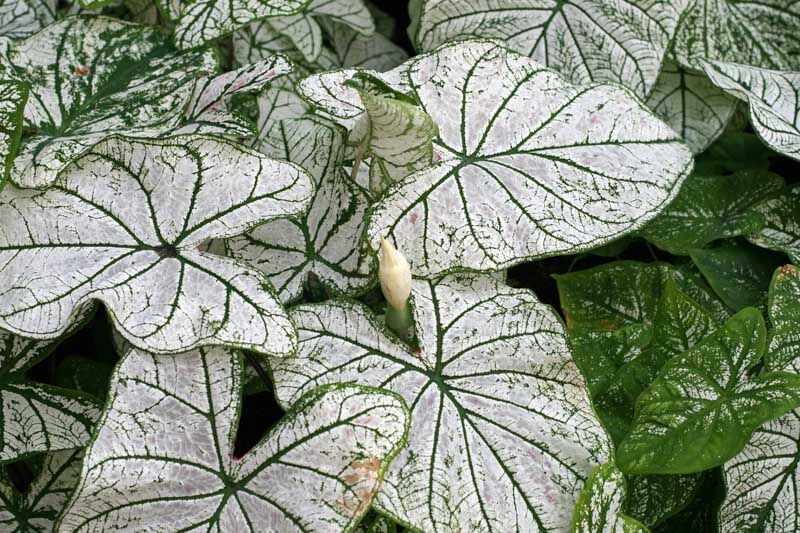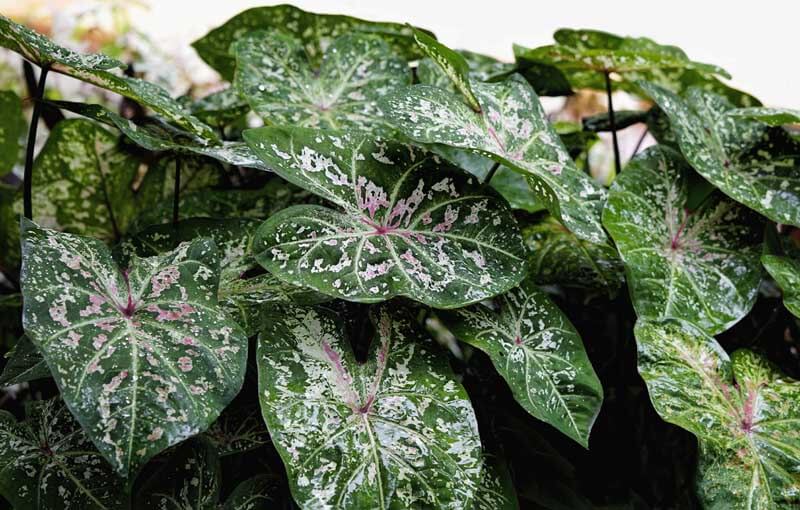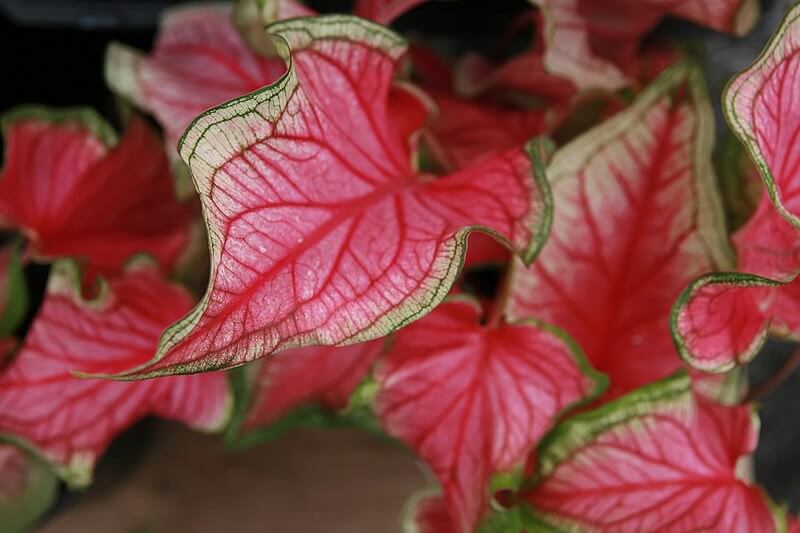
Summer color is always a challenge in the shade garden. Among the most valuable plants for filling the summer color void are the many showy-leaved hybrids of the tropical American native, Caladium bicolor. Available in a range of flamboyant hues, including flamingo-pink and flaming red, these tender perennials kick into high gear in the first hot days of June and July, just as the spring shade perennials are exiting the scene.
Planting Caladium

The leaves arise from knobby tubers that break dormancy in spring after the soil has warmed to 60 degrees or more, so don’t plant them until outdoor temperatures are warm. Dormant tubers rot in cold damp soil, so north of USDA Hardiness Zone 9 they overwinter reliably only if stored indoors (a dry, well-aerated location works best). Gardeners in frost-free areas can grow caladiums as perennials.
Caladiums are ready-made for tropical (and subtropical) gardens. In chillier regions, they’re ideal subjects for plantings that evoke sultry, exotic climes. Place them in a border or large container with tuberous begonias, elephant-ears, peacock gingers, kalanchoes, and other denizens of equatorial regions, and you’ll have a tropicalissimo composition worthy of a Brazilian garden.
However you deploy caladiums, they’ll grow best planted shallowly (2 or 3 inches deep) in average to moist, humus-rich soil and dappled shade. Many will do fine in full sun if the soil is sufficiently moist (but not soggy). If your soil is heavy or sandy, amend it with Fafard Premium Natural & Organic Compost before planting.
Caladium Groups

Caladiums are usually categorized into two groups, defined by the shape and size of their leaves. These include “fancy-leaved” and “strap-leaved varieties. The fancy-leaved types typically produce large, heart-shaped foliage that does best in partial shade. Popular since Victorian times, they include:
- ‘Candidum’, a venerable, nineteenth-century introduction widely grown for its chalk-white, boldly green-veined foliage;
- ‘Fannie Munson’, a brilliant shrimp-pink cultivar accented with magenta-pink veins;
- ‘Frieda Hemple’, whose dazzling, glossy brick-red leaves have intense red veins that extend into wide rich-green margins;
- ‘Kathleen’, a salmon-pink variety with broad, bright-green borders;
- ‘White Queen’, with creamy-white leaves etched with burgundy-red veins.
- Proven Winners Sun or Shade Caladiums: These come in many colors and are well adapted to growing in either sun or shade.

“Strap-leaved” caladiums produce narrower, smaller, relatively sun-tolerant foliage, with leaf stems joined to the base of the leaf blade (rather than toward its middle). There are quite a few notable varieties worth seeking out.
- ‘Lance Wharton’ has a central flame of vivid flamingo-pink, flecked with white and bordered in various shades of green. Bright red veins complete the picture;
- ‘Gingerland’ is decked out in multiple tones of green and white, with raspberry-red splotches;
- ‘Florida Sweetheart’ has reddish-pink-leaves edged in shades of cream and green;
- ‘Miss Muffet’ bears lime-green leaves with bold maroon freckles.
Caladiums such as ‘Miss Muffet’ that measure less than 12 inches tall are sometimes classified as “dwarf” varieties. They’re well suited for tight spaces, including as house plants, where they grow well in a humus-rich, well-drained potting mix such as Fafard Professional Potting Mix. An east-facing windowsill – away from the air-conditioning – is ideal. Storehouse plant caladiums – unwatered – in a cool location for the winter, repotting them in mid to late spring.

